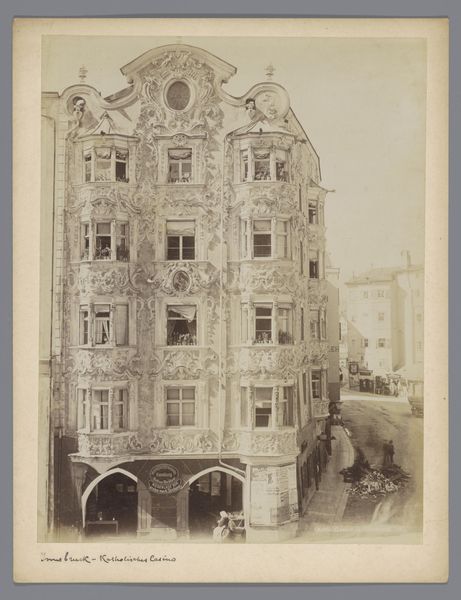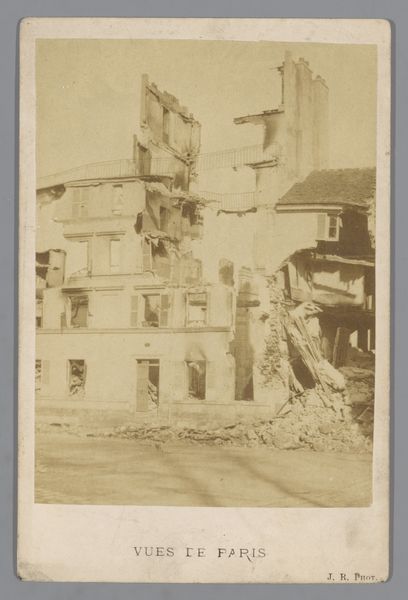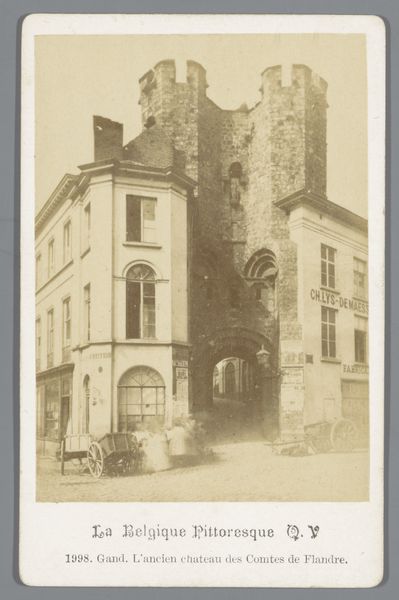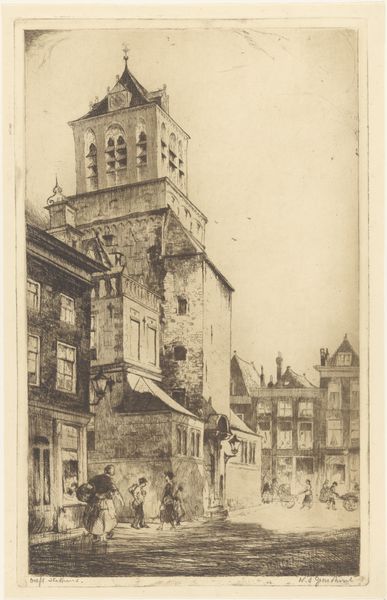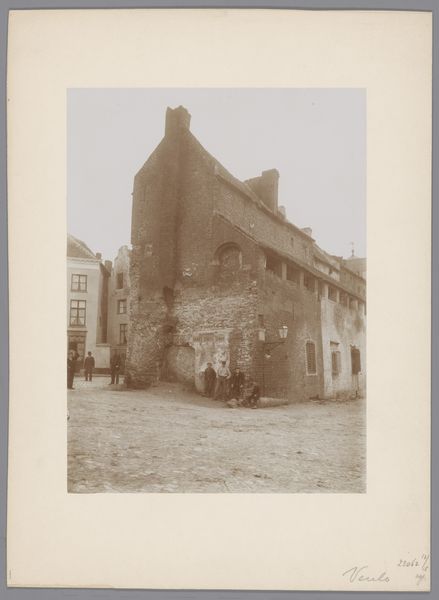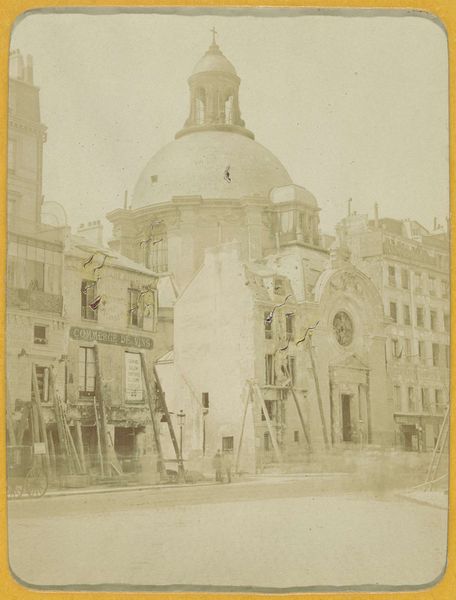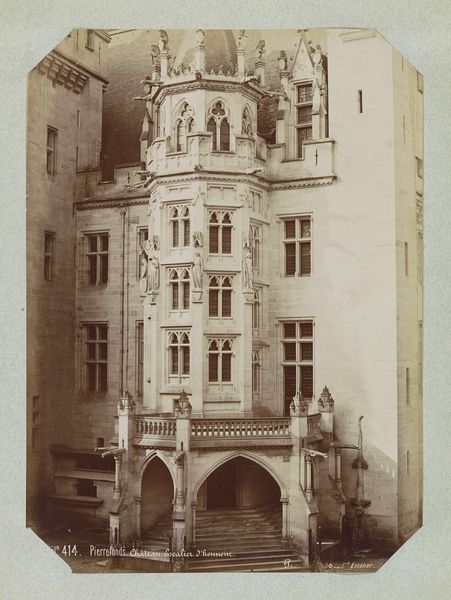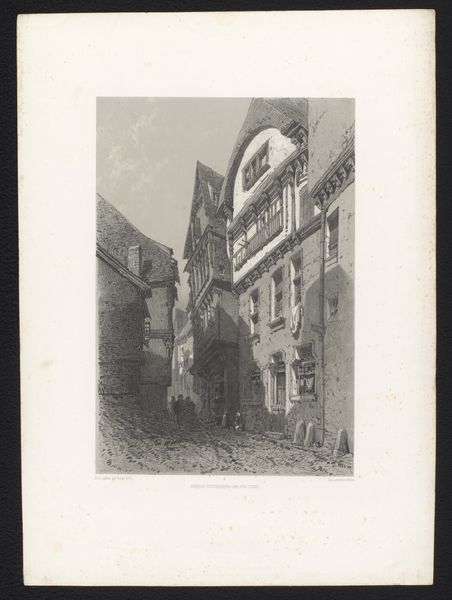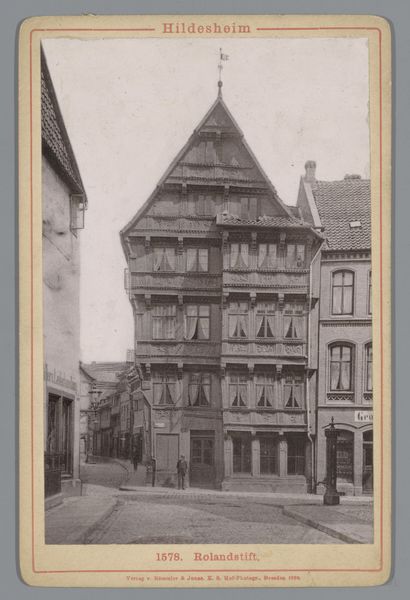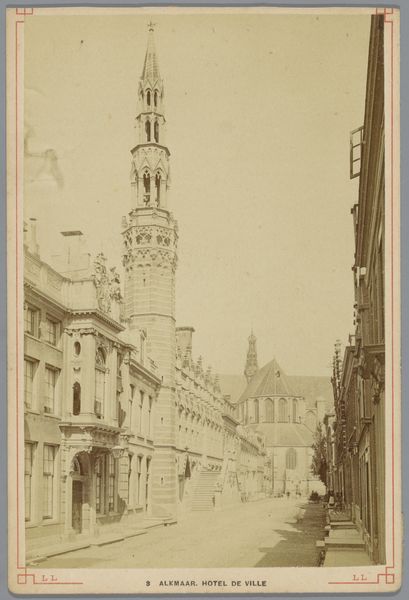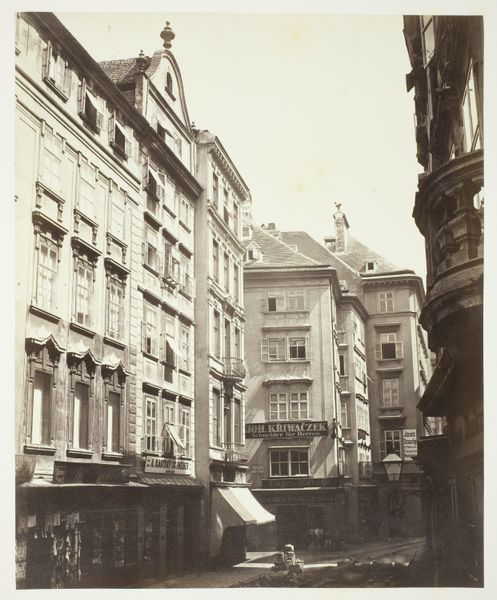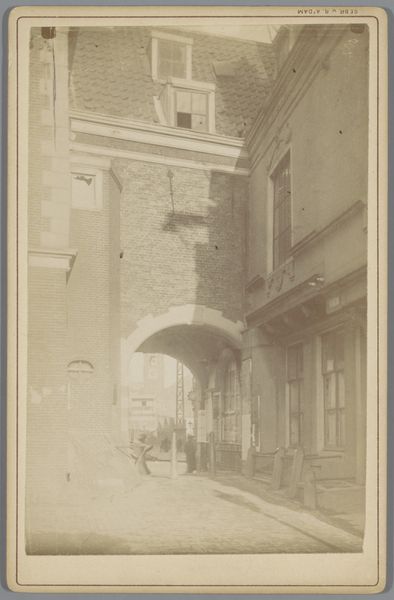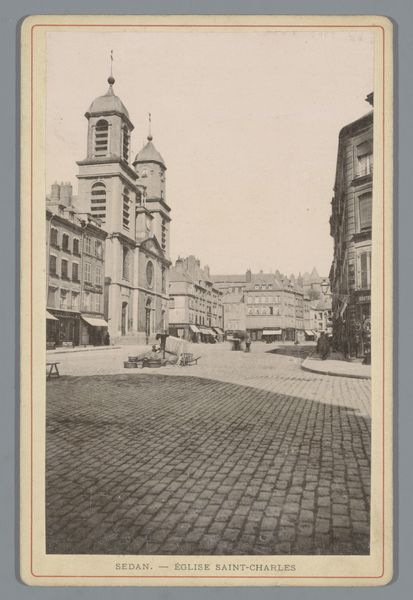
daguerreotype, photography
#
daguerreotype
#
photography
#
cityscape
#
street
Dimensions: height 279 mm, width 216 mm
Copyright: Rijks Museum: Open Domain
Curator: Immediately striking, isn’t it? A daguerreotype by Fritz Gratl titled, "Seilergasse met uitzicht op de stadstoren in Innsbruck, Oostenrijk," placing us somewhere between 1850 and 1920. The soft sepia tones lend it an aura of bygone eras. Editor: There's a stark contrast between the stillness of the architecture and what must have been the hustle and bustle of that street. It feels suspended in time, doesn’t it? Like a memory slowly fading. The tall city tower acts almost as a compositional lodestone. Curator: Indeed, the spire pierces through the image vertically, establishing both depth and a spiritual resonance, drawing your eye skyward despite the earthy activities at street level. In many ways, these early photographs created a shared visual record, helping shape perceptions of cities like Innsbruck as places of aspiration, and industry. Editor: I agree about its social implications. We must remember, though, the act of seeing has been fraught. These carefully composed streets hide as much as they reveal. For whom was this picturesque quality crafted and by whose labor? Are we truly seeing the day-to-day reality for most Innsbruck residents? Curator: Those are crucial considerations, it shows us more than the stones. Look at the hanging signage, the slight blurring around the figures. Each element operates like a cultural cipher, echoing commercial, even personal stories. Editor: I am always drawn to such historical records. What symbols might viewers in a century interpret here that we fail to notice? Or vice-versa; it serves as a sobering reminder that cultural memory is never complete or universally shared. Curator: Agreed. It's not just about what's present in the image, but about what's evoked and remembered. It reminds us to seek diverse perspectives when piecing together historical truths. Editor: Absolutely. Analyzing images like this allows us to deconstruct the past’s visual narratives. It becomes a tangible encounter with history that might change our shared view of it.
Comments
No comments
Be the first to comment and join the conversation on the ultimate creative platform.
